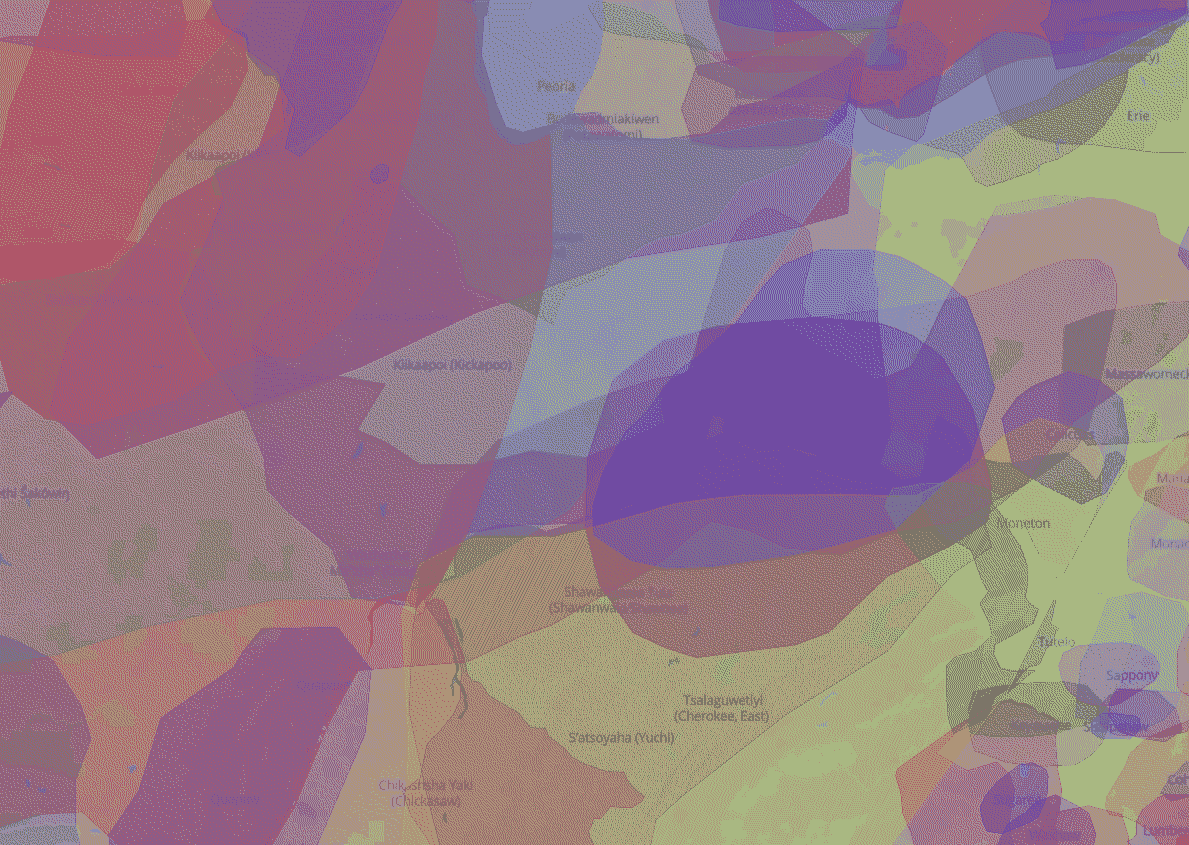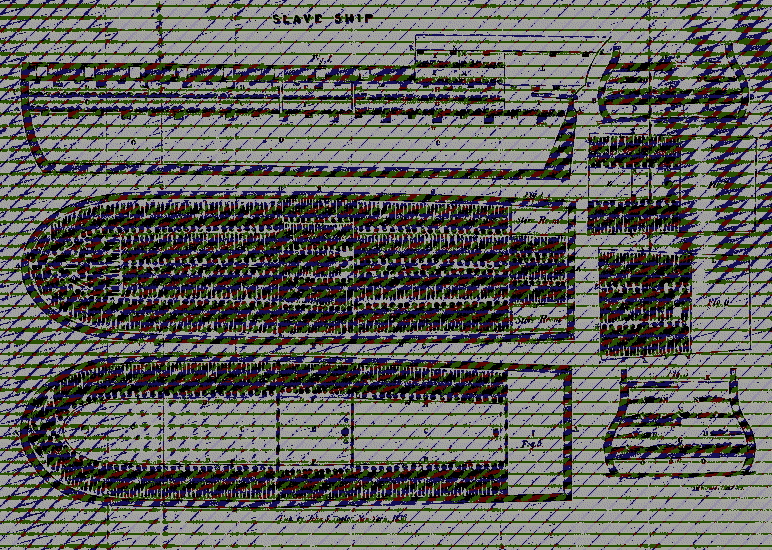Land Acknowledgment
The Land
One of the things I have been thinking about over the last few years is the politics of the land. I have learned a lot about the way that my society - American society - came to be. I have also started to learn more deeply about the concept of justice. In the history of my people, there is much injustice - and we are the ones who perpetrate it.
The land where I (and these website files) reside suffers under the weight of countless injustices - layers and layers of harm done by me, my people, and our ancestors. Today, I am starting by acknowledging my relationship with the very first: the theft of this continent.
The so-called “New World”1 was stolen over the course of the last 600 years. Descendants of this land’s original inhabitants live here still - they are my friends and colleagues. The very least we can do is examine the generations of unimaginable pain our own ancestors may have caused them, and look within ourselves to connect those histories with our present reality.

A screenshot of North America from Native-Land.ca.
One of the first steps to showing solidarity with Indigenous peoples as a settler is to explore the histories of the land that you inhabit. Many organizations also choose to acknowledge those histories before public events and performances.
In a way, these blog posts are my “performances.” The website, the venue. If the Internet is not some other world, but rather Real Life - if things that are said and done here have an effect on the physical world, and they do - then we need to take our online activity as seriously as we would our daily physical lives. Thus, I begin this acknowledgment.
Mannahatta
The island on which I live, and where this website’s little server is found, is home to 1.6 million people. It is covered in massive buildings, crowded streets, and crisscrossed with thrumming subterranean transportation tunnels. In some ways, it is the most important city in the world. It is the seat of power for Western capitalism, and we call it Manhattan.

A screenshot of New York and the surrounding area from Native-Land.ca.
Before a convergence of circumstances led to this city’s international wealth and fame, and before my people came to these lands, it was also well known, but not for its commercial prowess. Then called Mannahatta, or “land of many hills,"2 it was known for its natural beauty and was home to the Lenni Lenape people.
When my people arrived, they displaced the Lenni Lenape - and all Native people - from these lands. The act itself, and all of the murder, deception, war, and genocide that took place throughout this campaign of “discovery” and “destiny,” are probably unforgivable.
In Manhattan, the story was one of deceit - fitting, for a city known for its shady real estate. According to Western histories, my people “paid” the Canarsie tribe $24 for the whole island.3 Whether or not you can actually buy land from a people that do not believe in private land ownership was irrelevant. Manhattan’s origins lie in theft.
Update, 2022: I am now based in Queens, NY, on the ancestral lands of the Canarsee (Canarsie) of the Munsee Lenape people.
My People
For many White Americans, family history is mythical and vague. They are probably from Europe, but when their ancestors arrived here and where, specifically, they came from are lost to time. Not so for my family. My dad has taken the time to dig deep into our family history. Having done very little of the work, I benefit in knowing exactly where I come from. The first step of acknowledging my ancestors’ mistakes - knowing them - is already most of the way complete.
Before I lived in New York, I was in present-day Kentucky, Indiana,4 and Illinois. Those unceded lands were originally home to the Miami, Oceti Sakowin5, Shawnee, Osage, and Cherokee. For several generations before, my people lived in Illinois, farming the original lands of the Peoria, Neshnabe, Meshkwahkihaki, and Sauk.

A screenshot of the American Midwest from Native-Land.ca.
Some of my ancestors arrived to this continent as recently as 150 years ago, from Germany and Sweden. Other Western and Central European forebears came to these lands over the preceding centuries. The settling of my ancestors in lands formerly home to Native nations (in communities later known as “sundown towns”) was part of a centuries long campaign to destroy Native communities that continues to this day.
Perhaps most relevant among my ancestors was the Puritan missionary John Eliot, who sought to Westernize and “civilize” the Massachusett people, causing irreparable harm by forcing them to reject their culture and therefore their economy.
A Haudenosaunee writer wrote that missionaries “serve as lay ambassadors of their culture, splitting off individuals from families, families from villages, villages from nations, one by one.”6 This was absolutely the case with the “Praying Indians” of Massachusetts. Eliot’s ideas, while less violent than the colonial norms of the time, prefigured the deeply harmful policies of Americanization that would arise 150 years later.7
NOTE: Although I happen to know some of the specifics of my ancestry, when I say “my people,” I mean White people. I benefit not only from the terrible actions of my direct ancestors, but from actions of White society as well. It is our arrival, our culture, our actions that have driven this world to the brink.
Black Lives
When my people arrived on this land, they brought others with them. They brought enslaved African people - ancestors of my friends and colleagues - to run their extractive capitalist enterprises. The crimes done by my people to Black people are too many to name, both during slavery and since.8 The enslavement - kidnapping - of Black people is yet another of the original sins of my people on these lands.

Slave ship diagram, first printed as a broadside in England in 1789.
Some of my ancestors lived in the American South back before the Civil War. Various branches of that family “owned” a few enslaved African people, over the course of generations. Since they were not major slaveholders, there are few records to be found. When they moved to southern Illinois, a free state, they likely sold them or gave them away.9
It has been 400 years since kidnapped Black people were first brought here. Modern slavery lives on in our prison systems, and systemic injustice is baked into every aspect of modern American life. Police brutality, the most public and violent way in which Black communities are torn apart, is only the tip of the iceberg.
To all of these injustices, I say this:
Our ancestors made many mistakes.
Our people committed many crimes.
There is much work to be done.
History Is Alive
(shifting from acknowledgment to discussion)
In my favorite book series, The Malazan Book of the Fallen, history is alive. It is personified by gods, ascendants, and other immortal beings, each with their own story. In some ways, they are more like impulses than characters - or ideas that just won’t die. They walk the earth, drifting from conflict to conflict, living myths long detached from the circumstances that forged them, seeking always an elusive sense of fulfillment that never comes.
Good lives on and adapts, but so too does evil. Like those ghoulish immortals of the Malazan world, some of our darkest ideas, as a species, never seem to go away. Supremacy. Scarcity. Materialism. Individualism. Some folks say that those who do not know the past are doomed to repeat it - and perhaps they are right. Today, however, it is as clear as ever that the past is not done with us, and knowing it is not enough. The evils of the past are not gone, and will not be going away anytime soon.
The lie of my people - White Supremacy - lives on, adapting and thriving at every level of American society. The past, in our world, may not walk or talk as it does in the Malazan one, but that makes it all the more challenging to defeat. In those moments when we feel we may have finally vanquished it,10 we are at our weakest. Sometimes the resurgence of our most evil ideas is so overwhelming, and so entrenched, that it confounds even our greatest thinkers. White Supremacy’s roots run deep.
Actions
A member of the Haudenosaunee, known by my people as the Six Nations Iroquois, wrote a few decades ago that:
For over 300 years, our people have been under a virtual state of siege. During this entire time we have never once given up our struggle. Our strategies have, of necessity, changed. But the will and determination to continue on remains the same.11
My ancestors were actively involved in this siege. Even as I seek justice in my work, and seek to support Native futures, I acknowledge that by remaining on this land I remain complicit in a crime that can never be undone.
Actions speak louder than words. I am on this journey, and would love for you to join me. I recommend that you start by reading Basic Call to Consciousness, the Haudenosaunee book from which I pulled the above quotations. If you want to explore the process of land acknowledgment, I recommend these resources:
- Guide to Indigenous Land and Territorial Acknowledgements for Cultural Institutions
- Territory Acknowledgement
- Honor Native Land: A Guide and Call to Acknowledgment
The Native-Land website is also a great place to start when researching the original inhabitants of the land under your feet.
Change begins with acknowledgment, but it does not stop there. We must stand alongside Native and Black activists and support their movements. We must offer our time, skills, and resources to the Native and Black organizations in our communities. And we must always continue to learn.
If you aren’t sure where to start, start with money. Pay a land tax! Support Native and Black-owned businesses! Reparations are not the only answer, but they are a fine place to begin.
~
I would be happy to talk with you about the above acknowledgment and discussion - especially you, my fellow White people. We have a lot to learn. Feel free to reach out if you want to chat.

-
These lands are known to some Northeastern Native peoples as Turtle Island. ↩︎
-
To this day, the city sits high upon its magical hills. In Central Park you can see its beautiful schist dipping to the south, marking the passage of glaciers from thousands of years ago. ↩︎
-
By the way, Indiana is the birthplace of the KKK. ↩︎
-
Pronounced Och-et-eeshak-oh-win. ↩︎
-
John Eliot is still a celebrated ancestor among many members of my family, both as an missionary and as a linguist. I once shared my direct descendance from him as a “fun fact.” I now look back at his actions with shame. ↩︎
-
To be clear, I believe in the possibility of a world without prisons, jails, and police. I believe we must invest in over-policed communities. Black lives matter, full-stop. ↩︎
-
Of course I would like to think that they freed them, but there is no reason to think so. Some of their cousins continued to own slaves back in Virginia. ↩︎
-
E.g., the 2008 election. ↩︎